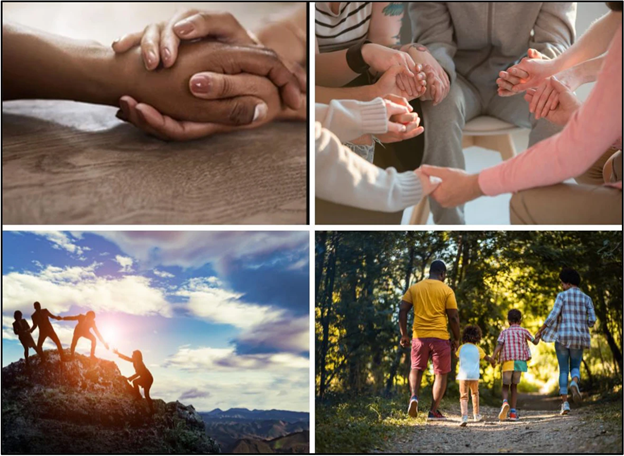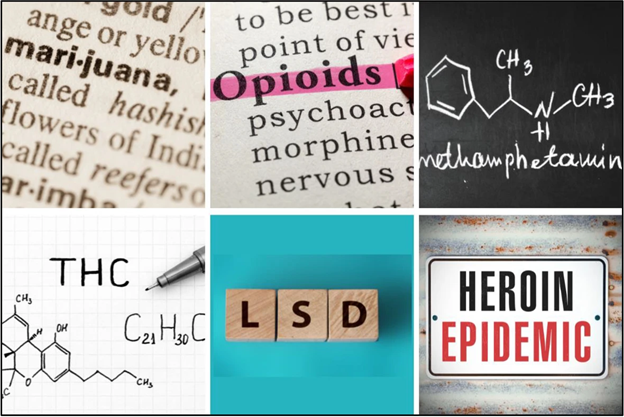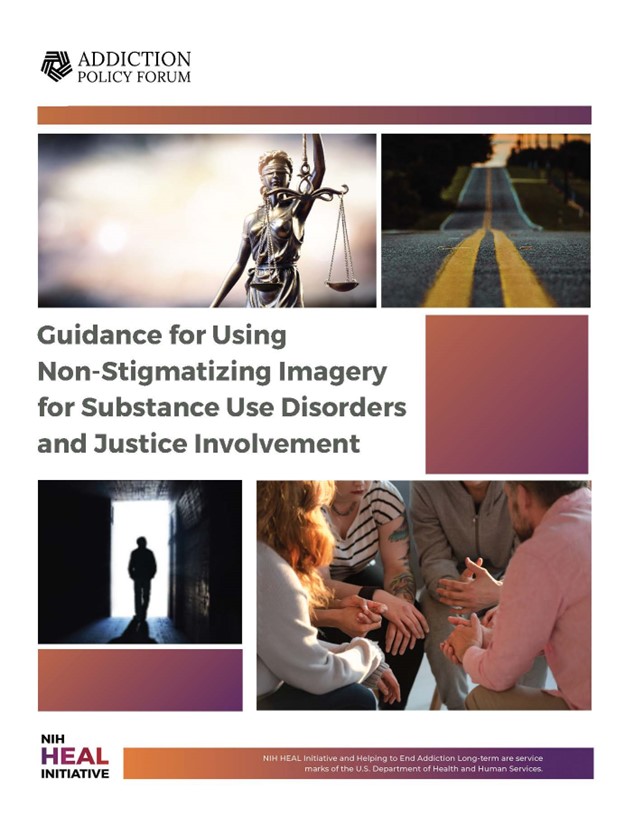Home > PTTC Post Article - February 2024
Behavioral Health and linguistic experts have long recognized that words matter. Words are powerful - they can shape culture, create understanding, perpetuate stereotypes, and play a role in how individuals and groups receive the world (Shashkevich, 2019). Words can perpetuate discrimination, prejudice, stereotypes, and negative views associated with substance use disorders (SUDs) and have been found to negatively impact public perception, access to treatment, recovery, and re-integration (Agate et al., 2021).
A recent qualitative study, Stigmatizing Imagery for Substance Use Disorders: A Qualitative Exploration, goes beyond words to include the use of pictures and visual images as essential elements in portraying substance use disorders in compassionate, healing, and non-discriminatory ways (Hulsey et al., 2023). The study’s primary goal was to provide practical guidance on the depiction of SUDs in various formats to reduce stigma. The study concluded that stigmatizing imagery could reinforce negative attitudes and beliefs about individuals with SUDS, which create barriers to care (Hulsey et al., 2023). In July 2020, the research team worked with key individuals to provide recommendations on the use of SUD-related imagery in communications about SUD to the Justice Community Opioid Innovation Network (JCOIN). A qualitative study was conducted with people with lived experience with SUD to explore participants’ responses to SUD-related images as stigmatizing or non-stigmatizing and categorized as “use” or “do not use.”
The most endorsed image among participants during the treatment and recovery section was an image of people helping to pull a peer up a hill with a landscape and a bright sky in the background, and a photo of a family holding hands, walking through a natural landscape. These photos are depicted below and all classified by participants as “do use”. Participants also highlighted the importance of showing “all kinds” of diversity (e.g., gender, age) to be depicted in both patient and physician roles represented (Hulsey et al, 2023).

The study findings have implications for the recommended depiction of substance use disorders and justice involvement by the media, research publications, policymakers, and other organizations and professionals. To facilitate the use of positive imagery a table was included in the published study that describes by setting, imagery to use, and to avoid. These images were selected as “use” or “do not use” by research study participants (Hulsey et al., 2023).
|
Category
|
Non-Stigmatizing Imagery
|
Stigmatizing Imagery
|
|---|---|---|
|
Treatment/
|
Holding hands, group therapy, support groups, people helping to support a peer. Stethoscopes, medical icons, external and internal photos of a hospital without patients present, prescription pads, and doctors without patients in frame with racial diversity.
|
Distressed or unhappy individuals, overly dramatized photos
|
|
Types of SUD
|
Molecular symbols of the SUD type, definitions from the dictionary, and typography
|
Images of drugs, alcohol, pills, and paraphernalia; images of individuals using or preparing substances
|
|
Law Enforcement |
Images with police cars, sirens, police stations, and police officers without other individuals in the image. Images with equal representation across different races and ethnicities in images, from depictions of law enforcement or other positions of authority to images of those who are justice-involved or requiring SUD services. Images where the representation of officers are alone (without an individual being arrested or depicted unfavorably) and helping in the community in pro-social activities. |
Images of people being arrested or in handcuffs. Images of white law enforcement officers and those being arrested represented by African American or Hispanic/Latino individuals.
|
|
Courts
|
Photos of empty courtrooms, a gavel, or the scales of justice to convey material or information related to the judicial system.
|
Depictions of individuals in prison jumpsuits or handcuffs.
|
|
Jail/Prison
|
Images that focus on positive activities during incarceration and photos of modern, updated common areas, cafeterias, prison libraries, and individuals in classrooms and vocational trainings to indicate prison settings.
|
Images of bars, rows of cells, individuals behind bars, and images of prison or jail structures that include barbed wire or gun towers.
|
|
Reentry
|
Photos of roads and pathways with hopeful coloring, doors opening with a hopeful theme and abstract images of the community. Aspirational, hopeful images to represent the promise of reentry and community reintegration. Participants suggested more community activity photos and employment-focused imagery.
|
Images of individuals still in prison jumpsuits or handcuffs in these settings, or any image that reflects despair. Unrealistic photos and descriptions of reentry and supervision.
|
Participants identified images of people using substances and paraphernalia (needles, syringes, spoons, or lighters) as both stigmatizing and triggering, with participants reporting that the images brought up urges or cravings to use substances and categorized this type of images as “do not use” (Hulsey et al., 2023). Participants endorsed using conceptual image options, such as molecular symbols of the SUD type, definitions of the type of substance from the dictionary, and typography options as “do use” to keep the information scientific and fact-based (Hulsey et al., 2023).

The old quote “a picture is worth a thousand words” is often attributed to newspaper editor Arthur Brisbane, from a 1911 speech suggesting that pictures were the most effective means of communication (Quote researcher, 2019). Prevention and Treatment professionals use pictures, graphics, and images to highlight, enhance, or accompany words to gain attention, create awareness, provide clarity, and promote engagement. It is important to choose these images as carefully as we choose our words. Addiction Policy Forum has developed a guide that details recommendations for images to use and images to avoid in publications and print and online materials. Guidance for Using Non-Stigmatizing Imagery for Substance Use Disorders and Justice Involvement was created with support from the Justice Community Opioid Innovation Network. The publication details recommendations for images to use and images to avoid in publication and materials and includes recommendations informed by interviews with individuals in recovery from substance use disorders and justice involvement.

Addiction Policy Forum (2023). Using Non-Stigmatizing Imagery for Substance Use Disorders and Justice Involvement. Updated: May 3, 2023 https://www.addictionpolicy.org/post/using-non-stigmatizing-imagery-for-substance-use-disorders-and-justice-involvement
Agata M. P. Atayde, Sacha C. Hauc, Lily G. Bessette, Heidi Danckers & Richard Saitz (2021). Changing the narrative: a call to end stigmatizing terminology related to substance use disorders, Addiction Research & Theory, 29:5, 359-362, DOI: 10.1080/16066359.2021.1875215
Hulsey, J., Zawislak, K., Sawyer-Morris, G., & Earnshaw, V. (2023). Stigmatizing imagery for substance use disorders: a qualitative exploration. Health & justice, 11(1), 28. https://doi.org/10.1186/s40352-023-00229-6
Shashkevich, Alex (2019). The Power of language: how words shape people, culture. August 22, 2019. News.stanford.edu https://news.stanford.edu/2019/08/22/the-power-of-language-how-words-shape-people-culture/ QuoteInvestigator.com (2022.) A picture is worth ten thousand words. July 22, 2022. https://quoteinvestigator.com/2022/07/22/picture-words/#:~:text=(4)%20One%20picture%20is%20worth,Barnard%2C%20and%20Chinese%20sage%20Confucius.